Lesbos is a beautiful Greek island that offers a vast array of natural diversity. The island is home to stunning landscapes, beautiful beaches, and an abundance of wildlife.
One of the most fascinating animals that inhabit this island is birds. Lesbos is renowned for its impressive birdlife, attracting bird enthusiasts from around the world. With over 300 species of birds recorded here, it is no wonder why the island has become a bird watcher’s paradise.
From majestic eagles to migrating warblers, Lesbos is abundant in birdlife that offers a spectacular sight for anyone who loves nature.
In this article, we will explore the diverse birdlife of Lesbos and its unique characteristics that make it an ideal destination for birdwatchers.
1. Spur-Winged Lapwing

The Spur-winged Lapwing is a species of wader found in the family Charadriidae.
It breeds around the eastern Mediterranean and Africa, where it inhabits savannahs, wetlands and grasslands.
Its plumage is mainly black with white wing stripes and yellow legs.
This bird has an impressive crest on its head that gives it a distinctive look amongst other lapwings.
The most interesting feature of this bird though is the spurs on its wings which are believed to be part of an unattested cleaning symbiosis between them and Nile crocodiles.
It feeds mostly on insects, larvae, worms as well as some plant material such as seeds or fruits.
Overall these birds can live up to 15 years in their natural habitat making them one of longest lived among all wading species.Scientific classification:
| Kingdom | Animalia |
| Phylum | Chordata |
| Class | Aves |
| Order | Charadriiformes |
| Family | Charadriidae |
| Genus | Vanellus |
| Species | V. spinosus |
Also Featured In: Common Ethiopian Birds, Flight Birds You Should Know
2. Olivaceous Warbler
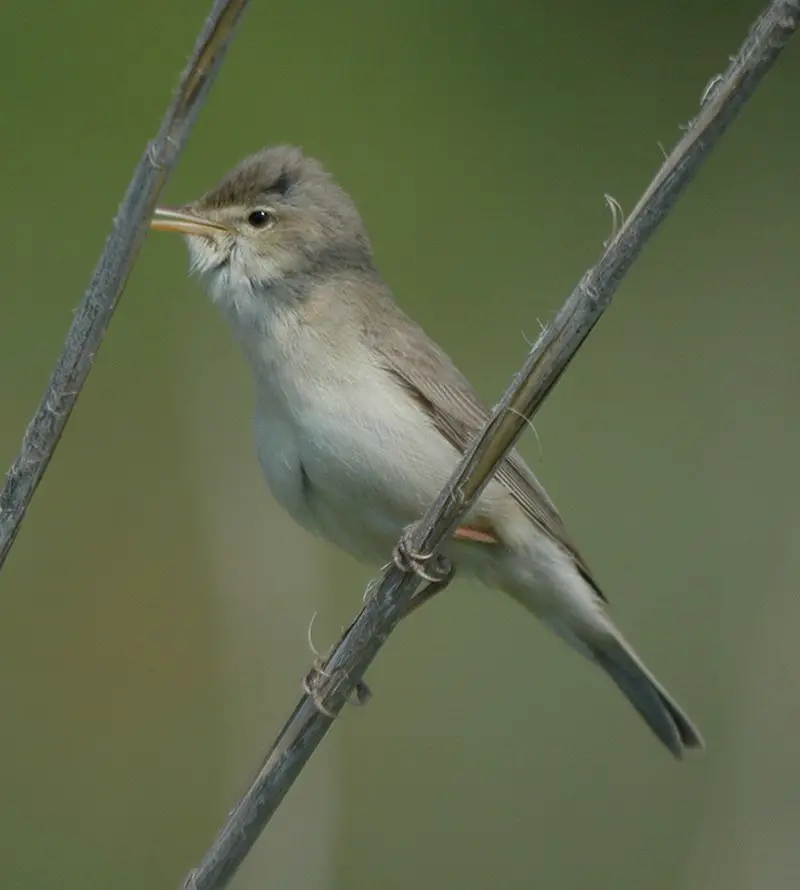
The Eastern Olivaceous Warbler is a small passerine bird, native to the Old World. It has dull plumage tones and breeds primarily in southeastern Europe, the Middle East and western Asia.
During winter it travels further south into northern Africa for warmer climates.
This warbler was previously grouped together with other Old World warblers as part of a larger family before being recognized as its own species.
The olivaceous warbler’s diet consists mainly of insects but also includes some fruit during migration months when food sources are more scarce.
These birds make use of their strong legs for hopping among foliage looking for prey or nesting materials such as feathers and twigs which they weave into cup shaped nests near ground level that can be found in shrubs or trees close to water bodies like rivers, lakes or marshes where there is plenty of insect life available throughout summertime breeding season.Scientific classification:
| Kingdom | Animalia |
| Phylum | Chordata |
| Class | Aves |
| Order | Passeriformes |
| Family | Acrocephalidae |
| Genus | Iduna |
| Species | I. pallida |
Also Featured In: Birds of Morocco, Bulgarian Birds
3. Western Rock Nuthatch
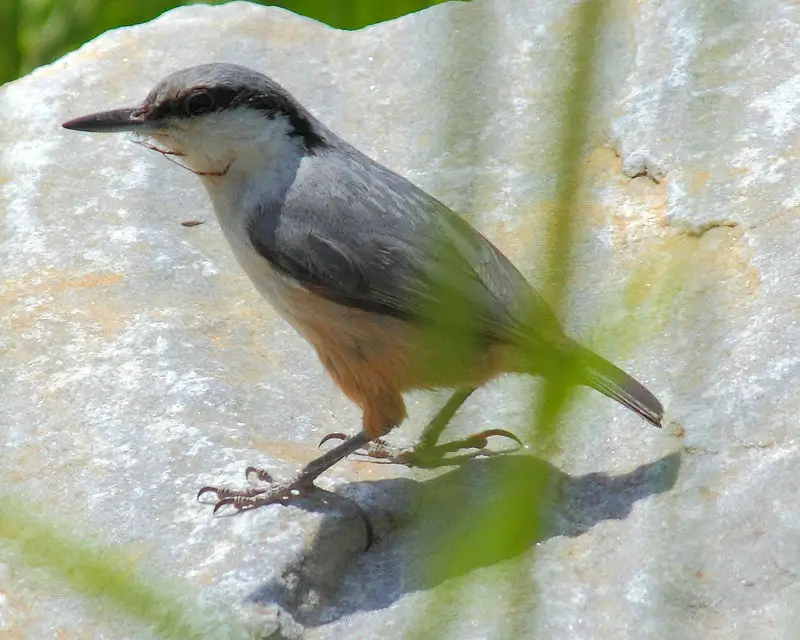
The Western Rock Nuthatch is a small passerine bird that can be found in parts of Europe and the Middle East. It has an olive-grey back, blackish wings, white underparts with a grey breast band, and yellow vent area.
Its legs are grey and its bill is short and broad. This species prefers rocky habitats such as mountainside cliffs or crags used for nesting sites where they build cup shaped nests using mud mixed with grasses or feathers.
They mainly eat insects but also consume seeds during winter months when food is scarce.
The western rock nuthatch remains largely resident apart from some post-breeding dispersal making it relatively easy to spot year round if you know what you’re looking for.Scientific classification:
| Kingdom | Animalia |
| Phylum | Chordata |
| Class | Aves |
| Order | Passeriformes |
| Family | Sittidae |
| Genus | Sitta |
| Species | S. neumayer |
Also Featured In: Most Beautiful birds of Greece, Common Serbian Birds
4. Woodchat Shrike
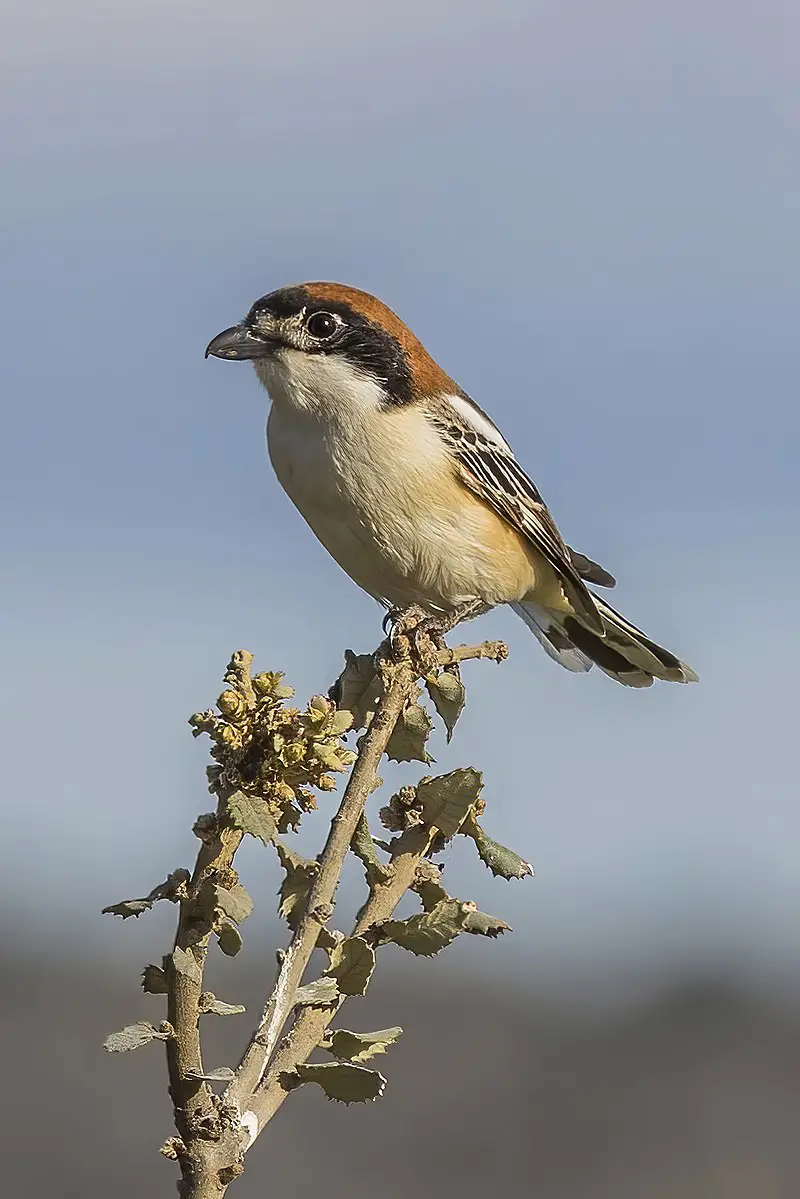
The Woodchat Shrike is a unique species of bird belonging to the shrike family. It has an unmistakable red-brown crown and nape that make it easily distinguishable from other birds.
This species mainly feeds on insects, but will also take small vertebrates if they are available.
They have adapted well to living in open wooded areas with scattered trees such as orchards, where there’s plenty of bare ground for them to hunt on.
During breeding season the Woodchat Shrikes can be found throughout Southern Europe, Middle East and Northwest Africa; while during wintertime these fascinating creatures migrate south towards tropical regions of Africa for warmer weather conditions.
All in all this species makes a fantastic addition to any outdoor environment – so why not give them some extra attention next time you spot one?Scientific classification:
| Kingdom | Animalia |
| Phylum | Chordata |
| Class | Aves |
| Order | Passeriformes |
| Family | Laniidae |
| Genus | Lanius |
| Species | L. senator |
Also Featured In: Italian Birds You Should Know, Common Slovakian Birds
5. Krüper’s Nuthatch
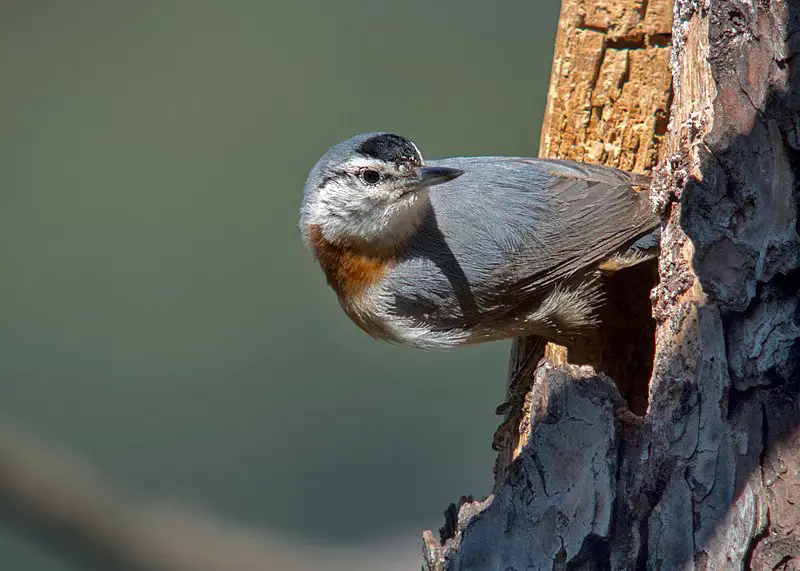
Krüper’s nuthatch is a species of bird in the Sittidae family. It has blue-gray upperparts with black or gray eyestripe and white supercilium, while its underparts are yellowish-white to pale buff.
The front half of the crown is black for adult males but less prominent for females. This small to medium sized bird measures 12.5 centimeters (4.9 inches) in length, and can be found from southeastern Bulgaria through Turkey into northeastern Iraq and Armenia, as well as Iran’s Turkmen Sahra region near Ashgabat city.
They inhabit deciduous forests dominated by oak trees where they feed on tree bark insects while climbing up and down trunks like other nuthatches do.Scientific classification:
| Kingdom | Animalia |
| Phylum | Chordata |
| Class | Aves |
| Order | Passeriformes |
| Family | Sittidae |
| Genus | Sitta |
| Species | S. krueperi |
6. Crested Lark
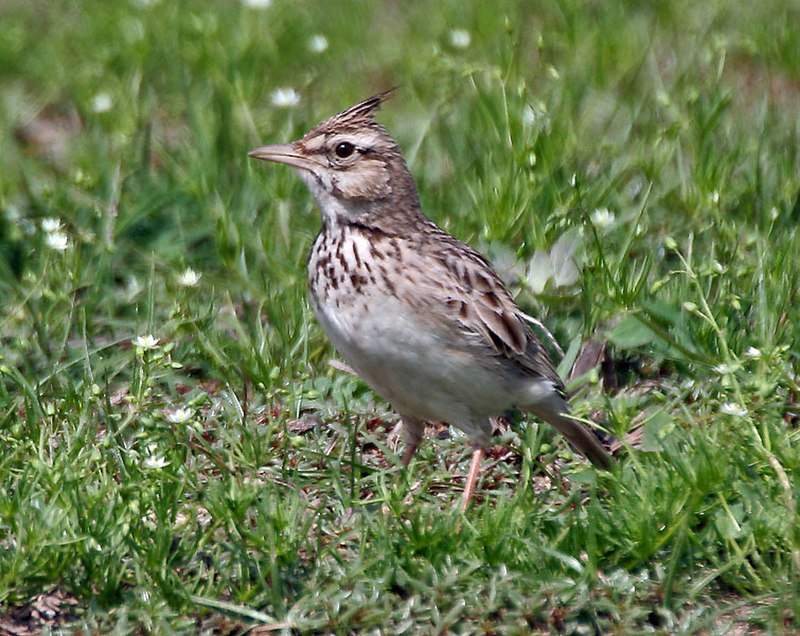
The Crested Lark is a species of lark that can be found across Eurasia and northern Africa. This non-migratory bird rarely appears as a vagrant in Great Britain.
It was originally described by Carl Linnaeus in 1758 for his 10th edition of Systema Naturae, under the genus Alauda until German naturalist Friedr Merrem moved it to its own genus Galerida in 1804.
The Crested Lark has an overall sandy color with darker brown wings and back, white underside, dark tail feathers and blackish bill.
Its most distinguishing feature are the two tufts on either side of its head which gives this species its name.Scientific classification:
| Kingdom | Animalia |
| Phylum | Chordata |
| Class | Aves |
| Order | Passeriformes |
| Family | Alaudidae |
| Genus | Galerida |
| Species | G. cristata |
Also Featured In: Common Birds of the Jordan, Birds Live in Tunisia
7. Yelkouan Shearwater
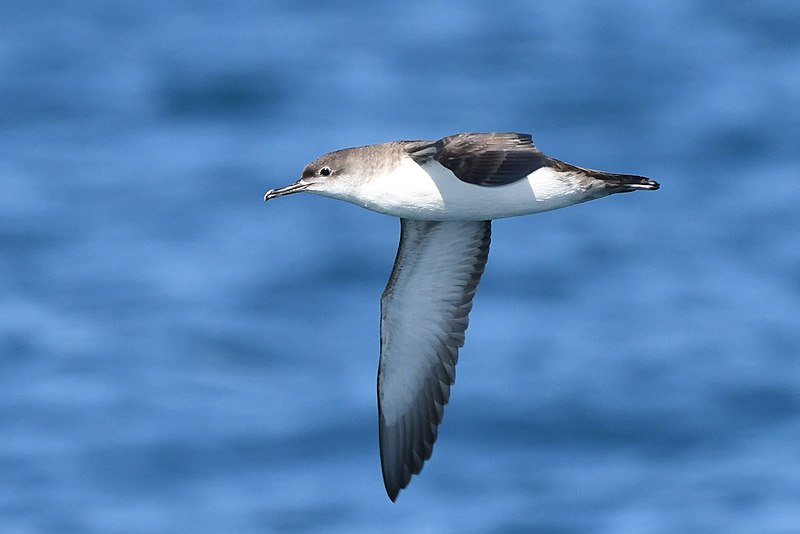
The Yelkouan Shearwater is a medium-sized seabird in the Procellariidae family. It was first described in 1827 by Italian naturalist Giuseppe Acerbi from specimens found near The Bosphorus, Turkey.
This species has also been known as Levantine or Mediterranean shearwater and for some time it was considered to be part of Manx Shearwater (Puffinus puffinus).
They have brownish grey upperparts with white underparts and black legs.
Their wings measure about 35 cm long which helps them during their migrations across the Mediterranean Sea each year between April and October when they leave breeding grounds on islands off south Europe to spend winter months at sea off Africa’s coastlines.
These birds feed mainly on small fish, planktonic crustaceans or squid taken while swimming underwater close to surface but sometimes can take food items directly from water’s surface like most other shearwaters do.Scientific classification:
| Kingdom | Animalia |
| Phylum | Chordata |
| Class | Aves |
| Order | Procellariiformes |
| Family | Procellariidae |
| Genus | Puffinus |
| Species | P. yelkouan |
Also Featured In: Native Birds Of Libya, Most Common Romanian Birds
8. Cretzschmar’s Bunting
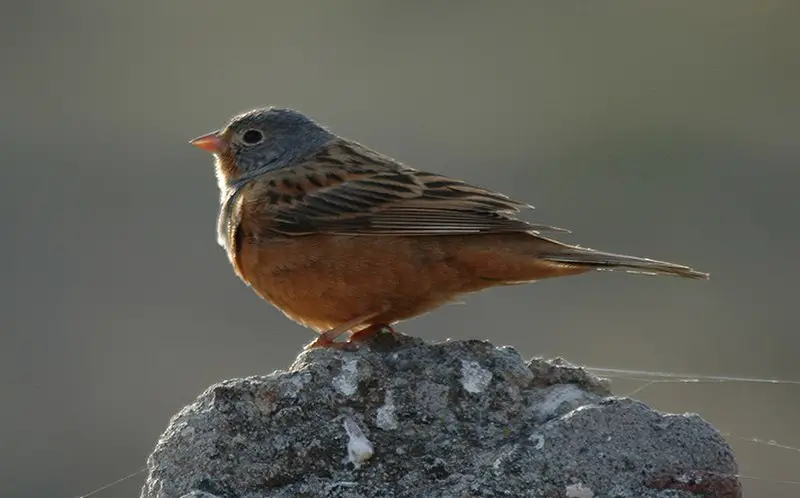
Cretzschmar’s bunting is a beautiful bird belonging to the Emberizidae family. It breeds in Greece, Turkey, Cyprus and Levant during summer months before migrating southwards towards Sudan and northern Eritrea for winter.
Its habitat comprises of sunny open hillsides with some bushes which provide it with food as well as shelter from predators.
The male Cretzschmar’s Bunting has an attractive black head while its upperparts are blue-grey in colour; hence making it easily distinguishable among other birds.
Although very rare, this species may sometimes be seen wandering around western Europe too.Scientific classification:
| Kingdom | Animalia |
| Phylum | Chordata |
| Class | Aves |
| Order | Passeriformes |
| Family | Emberizidae |
| Genus | Emberiza |
| Species | E. caesia |
Also Featured In: Cyprus birds, Common Algerian Birds
9. Rüppell’s Warbler
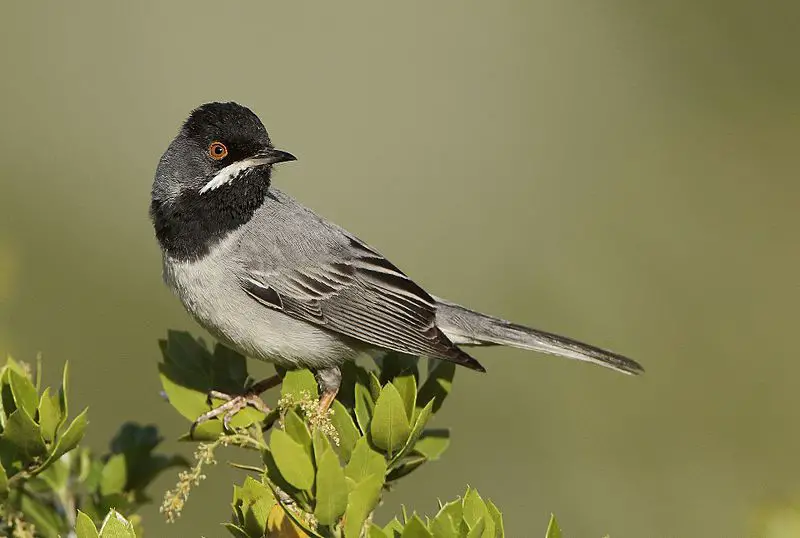
Rüppell’s warbler is a species of small passerine bird that belongs to the genus Curruca. It breeds in southern Europe, particularly in Greece and Turkey, before migrating south for wintering grounds in northeast Africa.
The adult plumage is plain greyish-brown above with whitish underparts; they have a slim figure compared to other birds of their family like the Sardinian Warbler.
Ruppel’s Warblers are generally shy but can be attracted by playing tapes containing recordings of their songs or calls.
Though rare, these birds may occasionally appear as vagrants on western European shores – making them an exciting sighting.
They typically inhabit open woodlands near water sources such as rivers and streams, where they feed mainly on insects gleaned from foliage or taken midair during hawking flights while singing enthusiastically throughout summer mornings.Scientific classification:
| Kingdom | Animalia |
| Phylum | Chordata |
| Class | Aves |
| Order | Passeriformes |
| Family | Sylviidae |
| Genus | Curruca |
| Species | C. ruppeli |
Also Featured In: Djibouti birds,
10. Blue Rock Thrush
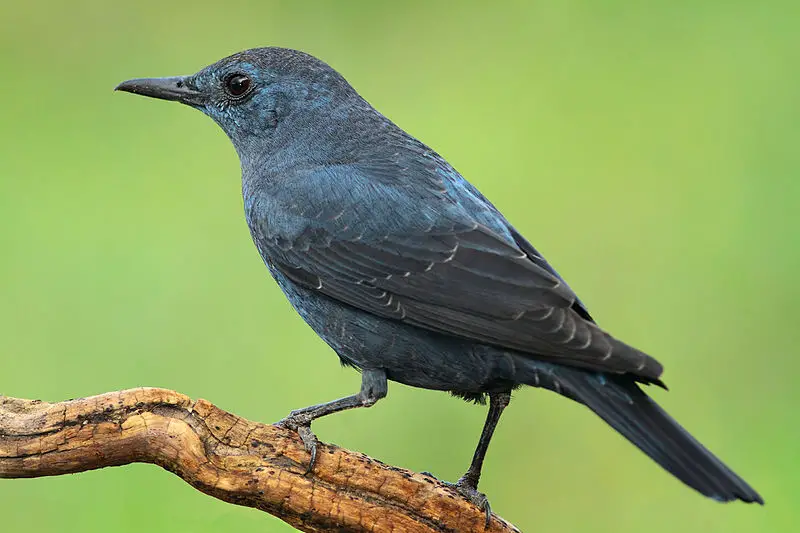
The Blue Rock Thrush is a species of chat that was once placed in the Turdidae family. It resides across many different regions, including southern Europe, northwest Africa, Central Asia and northern China to Malaysia.
This bird has even been adopted as Malta’s national bird; it is called “Merill” there.
The Blue Rock Thrush lives within rocky areas where they can find shelter from predators and build their nests on cliffs or steep slopes with rocks.
They are very agile birds with long wings enabling them to swoop in for prey quickly while also allowing them to fly away rapidly if need be.
Their diet consists mainly of insects but will occasionally eat small fruits and berries when available too.Scientific classification:
| Kingdom | Animalia |
| Phylum | Chordata |
| Class | Aves |
| Order | Passeriformes |
| Family | Muscicapidae |
| Genus | Monticola |
| Species | M. solitarius |
Also Featured In: Malta birds, Birds of Kobe
11. Cinereous Bunting
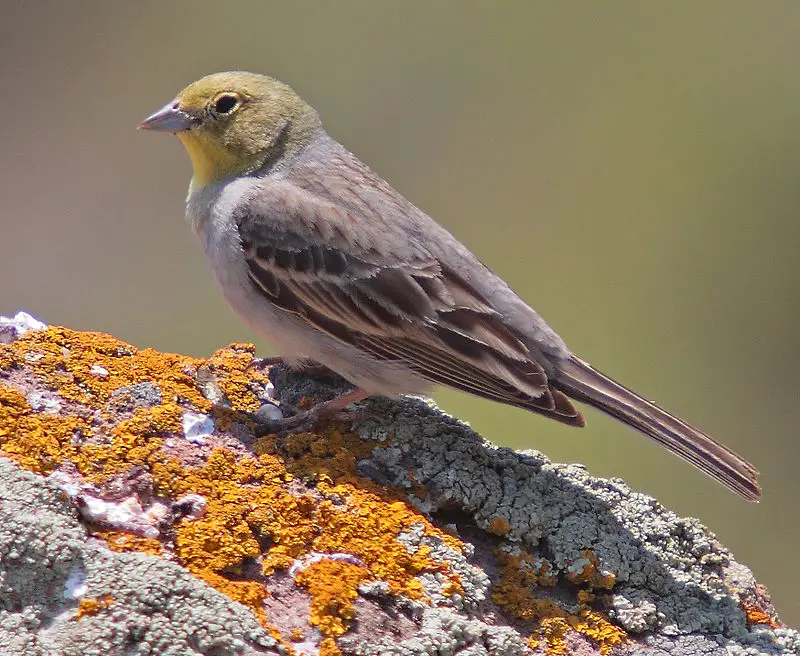
The Cinereous bunting is a passerine bird found in southern Turkey and southern Iran. It belongs to the Emberizidae family but has been separated from finches by most modern authors.
Its scientific name is Emberiza cineracea, and it was first described by Christian Ludwig Brehm.
During winters, this bird migrates to north-eastern Africa and Yemen, mostly around the Red Sea.
A few small and isolated populations maintain the species. The Cinereous bunting is a small-sized bird with an unmistakable coloration of grey on its head, neck, and underparts. Its upperparts are brown with white streaking.
They have a thick bill, rounded wings, and a short tail. They prefer habitats like rocky slopes, steppe, and open shrublands, and their diet includes insects and seeds.Scientific classification:
| Kingdom | Animalia |
| Phylum | Chordata |
| Class | Aves |
| Order | Passeriformes |
| Family | Emberizidae |
| Genus | Emberiza |
| Species | E. cineracea |
Also Featured In: Syrian Birds You Need to Know,
12. Eastern Subalpine Warbler
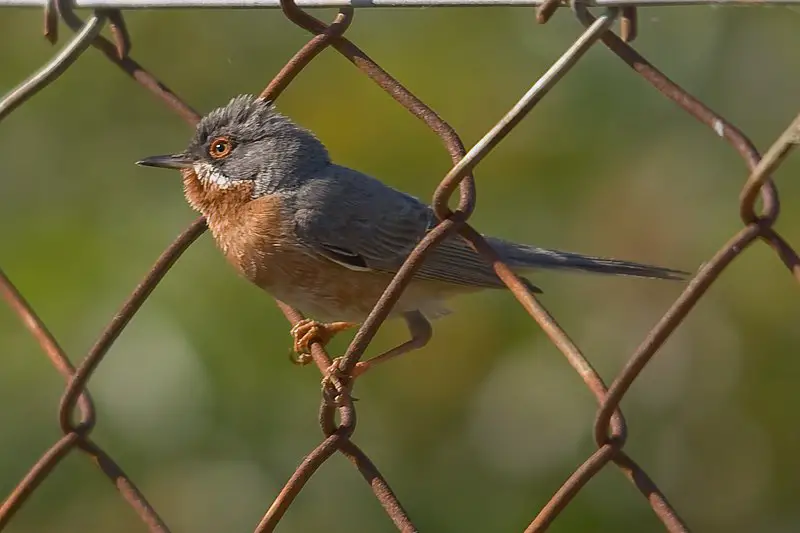
The Eastern subalpine warbler is a small typical warbler found in the southernmost areas of Europe. It has distinct male and female plumage.
It was first described by the German naturalist Peter Simon Pallas in 1764 and is also known by its binomial name, Curruca cantillans.
The specific name, cantillans, means “warbling” in Latin, as this species is known for its melodious song.
This bird breeds in subalpine habitats and prefers brushy areas with bushes and trees. The Eastern subalpine warbler feeds mainly on insects and other small invertebrates.
Despite its small size, it is a strong migratory bird, spending winters in Africa and returning to breed in Europe during the summer.Scientific classification:
| Kingdom | Animalia |
| Phylum | Chordata |
| Class | Aves |
| Order | Passeriformes |
| Family | Sylviidae |
| Genus | Curruca |
| Species | C. cantillans |
Also Featured In: Common Cornwall Birds,
13. Pied Avocet
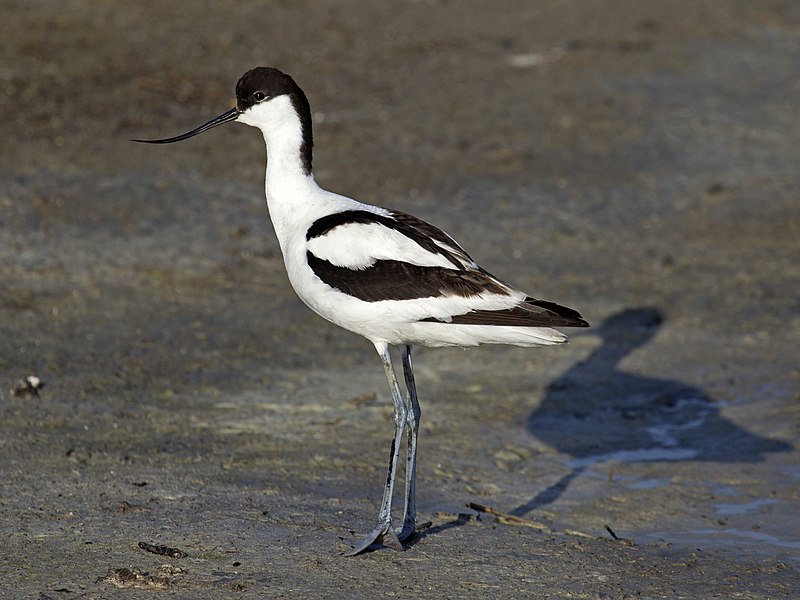
The pied avocet is a distinctive wader bird, easily recognized by its black and white plumage and upturned bill.
Found in temperate Europe and the Palearctic region, these birds migrate to Africa or southern Asia for the winter.
However, some of them can stay in the southern part of their breeding range. These birds are known for their distinctive feeding behavior, where they sweep their bills side to side through shallow water to locate prey.
They mainly feed on aquatic invertebrates, such as insects and crustaceans.
The pied avocet can be found in a range of wetland habitats, including coastal lagoons, estuaries, and shallow lakes.
They breed in colonies and make nests on the ground, which are often located on islands or raised mounds.
These birds are considered to be of least concern for conservation, although habitat loss and disturbance can pose a threat to their populations.Scientific classification:
| Kingdom | Animalia |
| Phylum | Chordata |
| Class | Aves |
| Order | Charadriiformes |
| Family | Recurvirostridae |
| Genus | Recurvirostra |
| Species | R. avosetta |
Also Featured In: Hong Kong Birds You Need to See, Black And White Birds You Don’t Know About
14. Eastern Bonelli’s Warbler
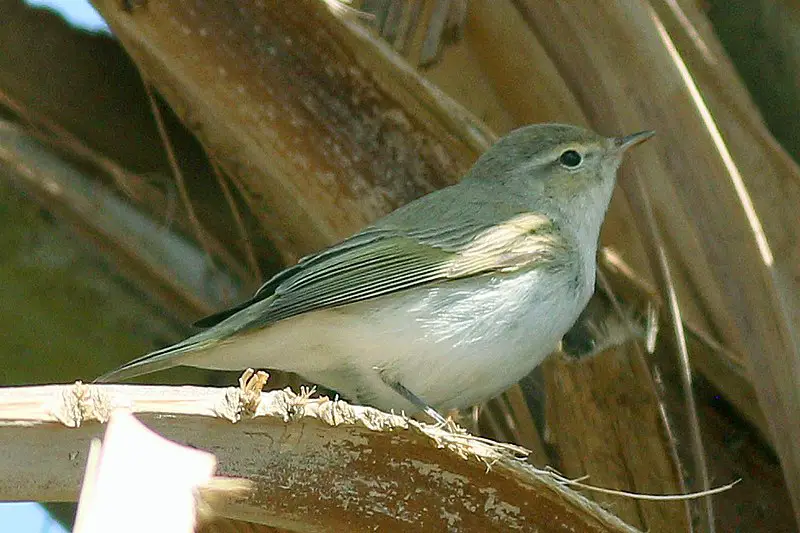
The Eastern Bonelli’s warbler, also called the Balkan warbler, belongs to the leaf warbler genus Phylloscopus. It used to be considered a subspecies of the widely-known Bonelli’s warbler, but modern taxonomy now recognizes it as a distinct species.
One significant difference between the two species is that their breeding ranges do not overlap. Eastern Bonelli’s warblers are not found in the same regions as their Bonelli’s counterparts. They are typically small birds that inhabit areas with dense vegetation.
They have olive-green upperparts and a yellowish-white underside. Their song is melodic and high-pitched. The species primarily feeds on insects and spiders, which it hunts in the foliage of trees and shrubs.
Despite being distinct from Bonelli’s warblers, Eastern Bonelli’s warblers share many similarities with other leaf warblers in their appearance and behavior.Scientific classification:
| Kingdom | Animalia |
| Phylum | Chordata |
| Class | Aves |
| Order | Passeriformes |
| Family | Phylloscopidae |
| Genus | Phylloscopus |
| Species | P. orientalis |